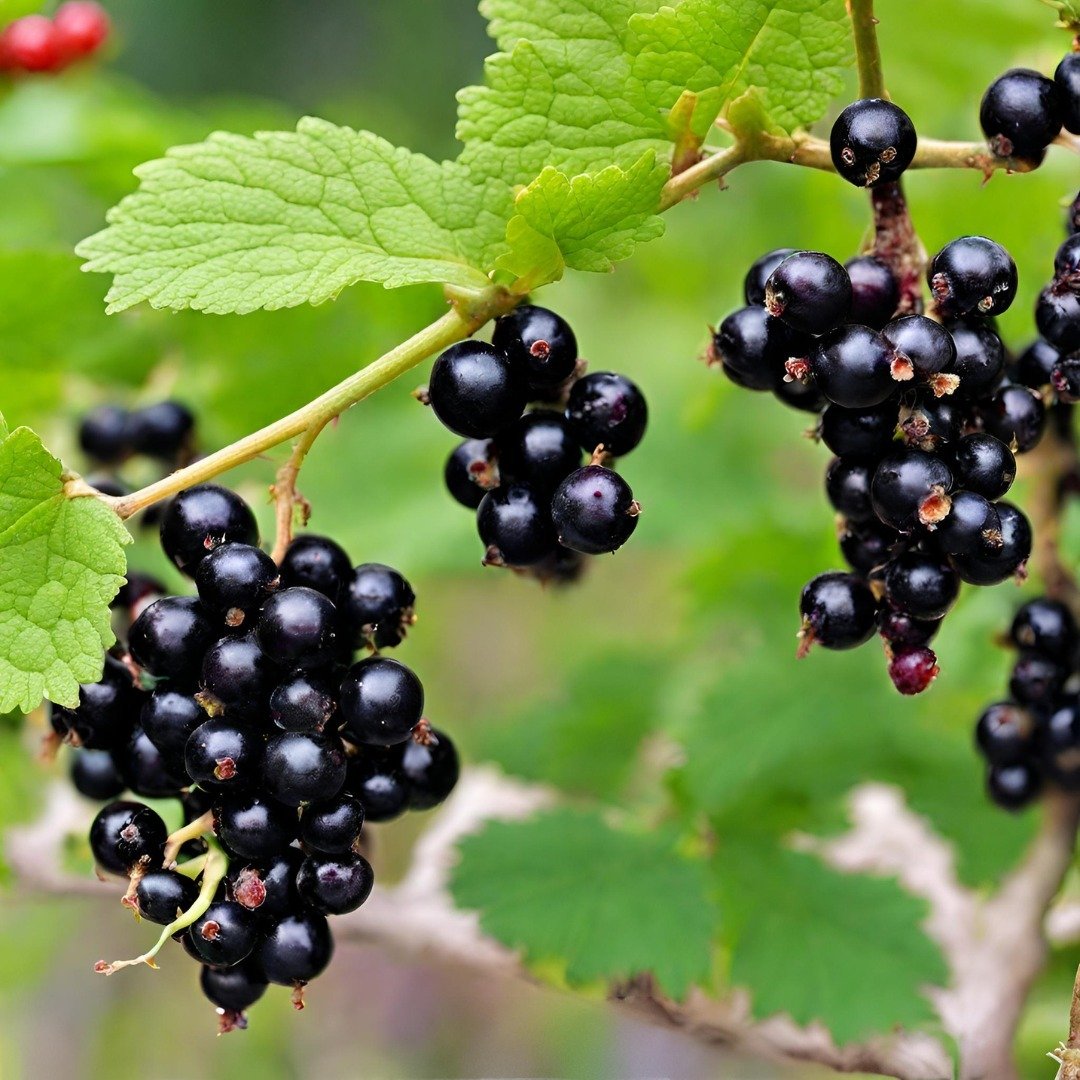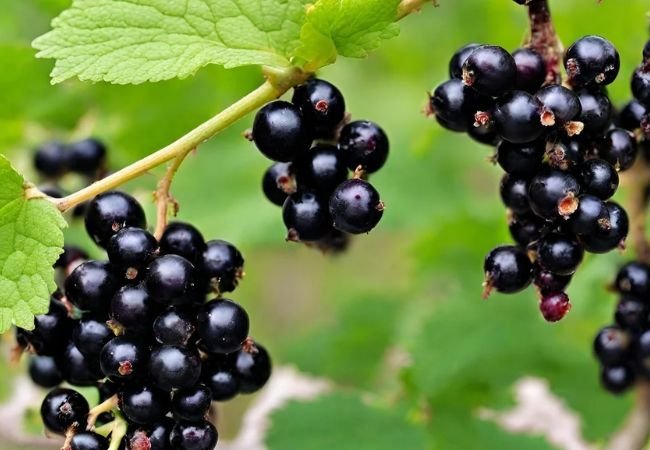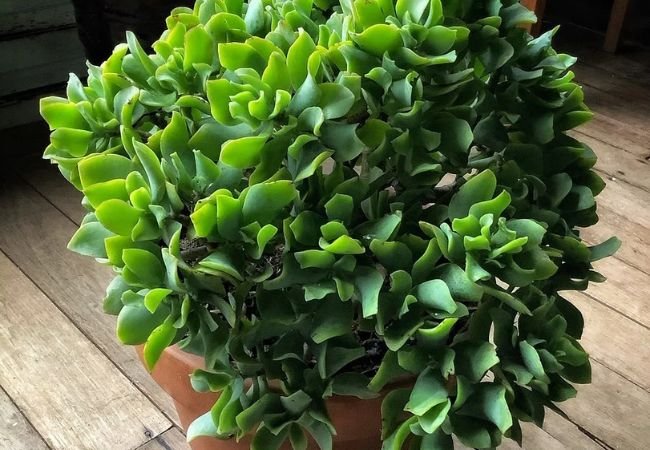Learn everything you need to know about cassis fruit, also known as black currant. Discover its benefits, uses and essential growing tips in our comprehensive guide.
Have you ever heard of cassis fruit? If not, you’re in for a treat! This small, dark berry, also known as black currant, is packed with flavor and health benefits. Let’s dive into the world of cassis and discover why it’s becoming a favorite among fruit lovers and health enthusiasts alike.
Here’s an information chart for Black Currant, scientifically known as Ribes nigrum:
| Attribute | Details |
|---|---|
| Botanical Name | Ribes nigrum |
| Common Name | Black Currant |
| Plant Family | Grossulariaceae |
| Hardiness Zone | USDA zones 3-8 |
| Sun Exposure | Full sun to partial shade |
| Soil Type | Well-drained, loamy soil |
| Watering | Moderate; consistent moisture |
| Growth Habit | Deciduous shrub |
| Height/Spread | 3-6 feet tall / 3-5 feet wide |
| Special Features | Edible berries, high in vitamin C, attractive to wildlife, suitable for hedges and borders |
What is Cassis Fruit?

Cassis fruit, scientifically known as Ribes nigrum, is a small, round berry that grows on shrubs. It’s native to northern Europe and Asia but is now grown in many parts of the world. The berries are dark purple, almost black and have a glossy skin. They’re about the size of a pea and grow in clusters, making them easy to harvest.
The History of Cassis
Black currants have been enjoyed for centuries. They were first cultivated in the 11th century in Russian monasteries. By the 16th century, they were popular across Europe. Interestingly, black currants were banned in the United States for many years because they were thought to spread a tree disease. This ban was lifted in most states in the 1960s and now cassis is making a comeback in American gardens and kitchens.
Nutritional Value of Cassis
Cassis fruit is a nutritional powerhouse. Here’s what you’ll find in these tiny berries:
- Vitamin C: Cassis has more vitamin C than oranges!
- Antioxidants: They’re rich in anthocyanins, which give the berries their dark color.
- Fiber: Good for digestion and keeping you full.
- Vitamin K: Important for blood clotting and bone health.
- Iron: Helps your body make red blood cells.
According to the USDA, 100 grams of raw black currants contain about 181 mg of vitamin C. That’s twice the daily recommended intake for adults!
Health Benefits of Cassis
Eating cassis fruit can be great for your health. Here are some of the benefits:
- Boosts Immune System: Thanks to its high vitamin C content, cassis can help strengthen your immune system.
- Supports Eye Health: The antioxidants in cassis may help protect your eyes from damage.
- Reduces Inflammation: Some studies suggest that cassis can help reduce inflammation in the body.
- Heart Health: The anthocyanins in cassis might help lower blood pressure and improve heart health.
- Skin Health: The vitamin C in cassis helps your body make collagen, which is important for healthy skin.
Growing Cassis at Home
Want to grow your own cassis? Good news – black currant bushes are pretty easy to grow! Here’s what you need to know:
- Climate: Cassis plants like cool climates. They can handle cold winters and prefer mild summers.
- Soil: They like rich, well-draining soil. Add some compost to your garden bed before planting.
- Sunlight: Cassis bushes do best with full sun to partial shade.
- Watering: Keep the soil moist but not soggy. Water deeply once a week.
- Pruning: Prune your bushes in late winter to encourage new growth.
For more detailed growing tips, check out this guide from Oregon State University Extension.
Cooking with Cassis
Cassis fruit has a tart, slightly sweet flavor that’s great in many recipes. Here are some ways to use it:
- Jams and Jellies: Cassis makes delicious preserves.
- Baking: Add cassis to muffins, pies or tarts for a burst of flavor.
- Sauces: Cassis sauce goes well with meat dishes, especially game.
- Drinks: Cassis is famous in the French liqueur Crème de Cassis. It’s also great in smoothies or tea.
- Ice Cream: Try making homemade cassis ice cream for a special treat.
Remember, fresh cassis can be quite tart. If you’re eating them raw, you might want to add a little sugar.
Cassis in Beauty Products
The benefits of cassis aren’t just for eating. Many beauty products use black currant seed oil. This oil is rich in gamma-linolenic acid (GLA), which can be good for your skin. You might find cassis in:
- Face creams
- Hair products
- Body lotions
- Lip balms
Some people say these products help keep their skin soft and reduce inflammation.
Buying and Storing Cassis
Fresh cassis can be hard to find in some areas. Here’s what to look for:
- Color: Choose berries that are deep purple-black and shiny.
- Firmness: The berries should be firm, not mushy.
- Stems: If the stems are still attached, they should be green and fresh-looking.
If you can’t find fresh cassis, look for frozen berries or cassis products like jams or juices.
To store fresh cassis:
- Keep them in the fridge.
- Don’t wash them until you’re ready to eat.
- Use within a few days for the best flavor.
You can also freeze cassis. Spread them on a tray, freeze, then transfer to a freezer bag. They’ll keep for several months.
Cassis Around the World
While cassis is most famous in Europe, it’s enjoyed in many parts of the world:
- France: Home of Crème de Cassis, used in the popular cocktail Kir.
- UK: Black currant flavored candies and drinks are very popular.
- Russia: Used in traditional medicines and foods.
- New Zealand: A major producer of black currants for export.
- Japan: Black currant flavored candies and drinks are gaining popularity.
Interesting Facts About Cassis
Here are some fun facts about cassis to impress your friends:
- The word “cassis” comes from the Latin word for “berry.”
- Black currants were used as a natural dye in medieval times.
- During World War II, black currants were an important source of vitamin C in the UK when oranges were hard to get.
- The leaves of the black currant plant are also edible and can be used to make tea.
- In some languages, black currants are called “squaw berries” or “quinsy berries.”
Potential Side Effects of Cassis
While cassis is generally safe for most people, there are a few things to keep in mind:
- Allergies: Some people may be allergic to black currants.
- Blood Thinners: The high vitamin K content might interfere with blood-thinning medications.
- Diabetes: Cassis might lower blood sugar, so diabetics should monitor their levels carefully.
Always talk to your doctor before adding any new food or supplement to your diet, especially if you have health conditions or take medications.
Cassis in Research
Scientists are studying cassis for its potential health benefits. Some areas of research include:
- Eye Health: Studies are looking at how cassis might help with night vision and eye strain.
- Arthritis: The anti-inflammatory properties of cassis are being studied for arthritis relief.
- Brain Health: Some researchers think cassis might help protect brain cells.
While more research is needed, these studies show the potential of this little berry. You can find some of this research on PubMed Central.
Cassis fruit or black currant, is a small berry with big benefits. From its rich nutritional profile to its versatile uses in cooking and beauty products, cassis has a lot to offer. Whether you’re growing your own bushes, cooking up some cassis jam or just enjoying a handful of fresh berries, there are many ways to enjoy this tart and tasty fruit.
Remember, while cassis is generally good for you, it’s always best to eat a variety of fruits and vegetables for the best health benefits. And if you’re trying cassis for the first time, start small to make sure you like the taste and don’t have any adverse reactions.
So why not give cassis a try? You might just discover your new favorite fruit!








Leave a Reply